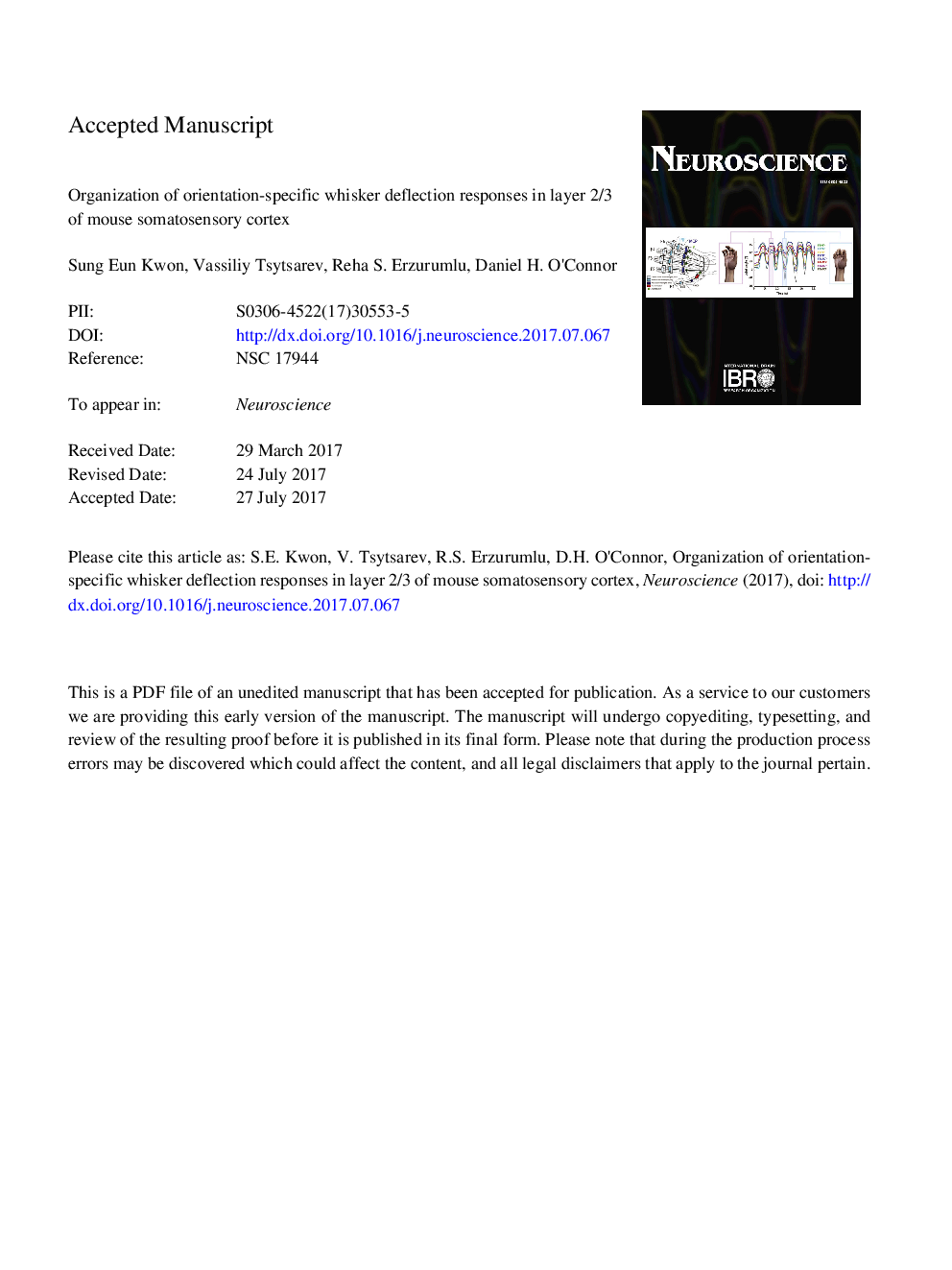ترجمه فارسی عنوان مقاله
سازماندهی واکنشهای انحطاطی غشایی خاص در لایه 2/3 قشر ساکوسوسنسوس موش
عنوان انگلیسی
Organization of Orientation-Specific Whisker Deflection Responses in Layer 2/3 of Mouse Somatosensory Cortex
| کد مقاله | سال انتشار | تعداد صفحات مقاله انگلیسی |
|---|---|---|
| 128682 | 2018 | 29 صفحه PDF |
منبع

Publisher : Elsevier - Science Direct (الزویر - ساینس دایرکت)
Journal : Neuroscience, Volume 368, 1 January 2018, Pages 46-56

